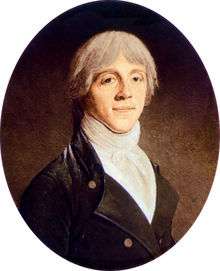Jules Paul Benjamin Delessert

Jules Paul Benjamin Delessert (14 February 1773 – 1 March 1847) was a French banker and naturalist.
Biography
He was born at Lyon, the son of Étienne Delessert (1735–1816), the founder of the first fire insurance company and the first discount bank in France. Young Delessert was travelling in England when the French Revolution broke out, but he hastened back to join the Paris National Guard in 1790, becoming an officer of artillery in 1793. His father bought him out of the army, however, in 1795 in order to entrust him with the management of his bank.
Gifted with remarkable energy, he started many commercial enterprises, founding the first cotton factory at Passy in 1801, and a sugar factory in 1802 where Jean-Baptiste Quéruel developed the industrial manufacture of sugar from sugar beet, and for which he was created a baron of the Empire. He sat in the chamber of deputies for many years, and was a strong advocate for many humane measures, notably the suppression of the Tours or revolving box at the foundling hospital, the suppression of the death penalty, and the improvement of the penitentiary system. He was made regent of the Bank of France in 1802, and was also member of, and, indeed, founder of many, learned and philanthropic societies. In 1818 He founded with Jean-Conrad Hottinger the first savings bank in France, the Groupe Caisse d'Epargne and maintained a keen interest in it until his death in 1847.
He was also an ardent botanist and conchologist; his botanical library embraced 30,000 volumes, of which he published a catalogue Musée botanique de M. Delessert (1845).[1] He also wrote Des avantages de la caisse d'épargne et de prévoyance (1835), Mémoire sur un projet de bibliothèque royale (1836), Le Guide de bonheur (1839), and Recueil de coquilles décrites par Lamarck (1841–42).
References
 This article incorporates text from a publication now in the public domain: Chisholm, Hugh, ed. (1911). "article name needed". Encyclopædia Britannica (11th ed.). Cambridge University Press.
This article incorporates text from a publication now in the public domain: Chisholm, Hugh, ed. (1911). "article name needed". Encyclopædia Britannica (11th ed.). Cambridge University Press.